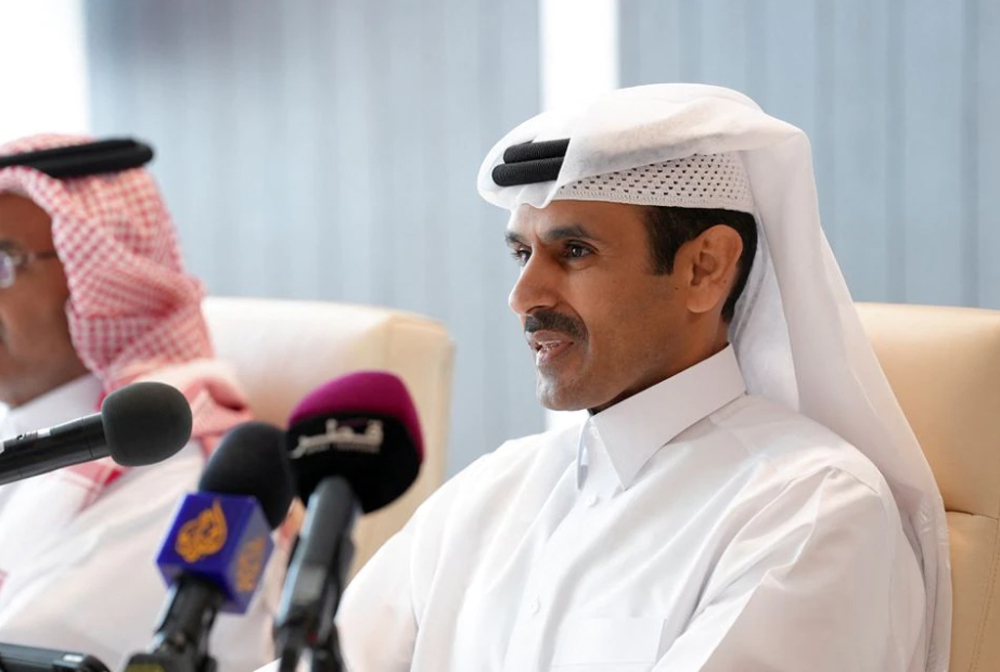QatarEnergy CEO and Qatar’s Minister of Energy Saad al-Kaabi attends a signing ceremony with Sinopec, in Doha, Qatar, November 21, 2022. REUTERS/Imad Creidi
DOHA, Jan 8 (Reuters) – (This Jan. 8 story has been refiled to correct spelling of ‘Phillips’ in the first paragraph, and spelling of QatarEnergy chief’s name in the third paragraph)
QatarEnergy announced on Sunday the final investment decision on the $6 billion Ras Laffan Petrochemicals Complex with partner Chevron Phillips Chemical which is expected to be the largest of its kind in the Middle East.
The complex, expected to begin production in 2026, includes an ethane cracker with a capacity of 2.1 million tonnes of ethylene per year.
The integrated complex will also include two high-density polyethylene derivative units with a total production capacity of 1.7 million tonnes per year, QatarEnergy chief Saad al-Kaabi said.
Originally announced in 2019, the project highlights how Middle East oil producers are expanding further into petrochemicals, used in the production of plastics and packaging materials, to move into new markets and find new sources of income beyond exporting crude oil and natural gas.
State-run QatarEnergy will hold a 70% stake in the venture with Chevron Phillips Chemicals holding 30% under the agreement signed on Sunday.
“This marks QatarEnergy’s largest investment ever in Qatar’s petrochemical sector,” Kaabi said.
The complex, located in Ras Laffan industrial city, is an “important milestone” in Qatar’s downstream expansion strategy, he said.
Qatar, one of the world’s top producers of liquefied natural gas (LNG), will see its ethylene production capacity double on the back of the new complex. Local polymer production will also increase from 2.6 million to 4 million tonnes per annum.
The Gulf state, one of the most influential global players in the world’s LNG markets, is expanding its North Field gas that will see its liquefaction capacity increase from 77 million tonnes per annum to 126 million tonnes by 2027.
Source : reuters.com

